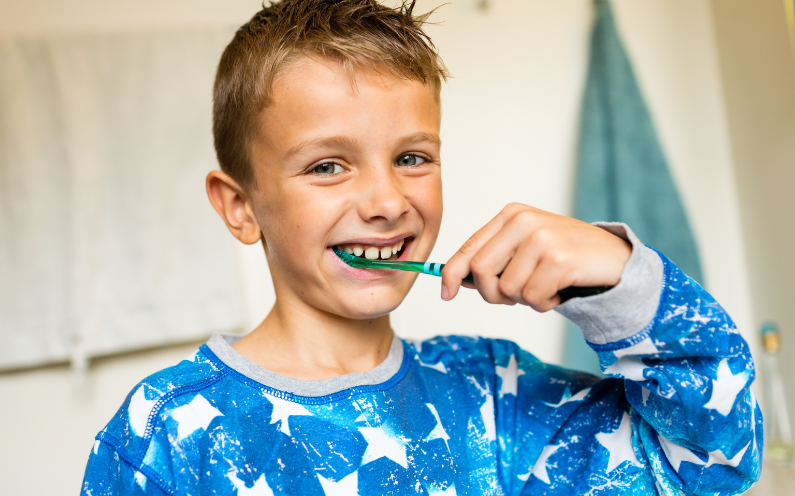
Primary teeth, also referred to as baby teeth, play an important role in your child’s overall development and oral health. Primary teeth are important for both chewing and speaking, as well as a place holder for permanent teeth to come. If a tooth becomes missing too early in a child’s development, it can affect the way that the permanent tooth grows into the dentition as well as alter the growth and development of the jaw.
Our goal at Dentistry for Children is to provide preventative care and support for your family. Together, as partners in your child’s oral healthcare we want to equip you with the tools and resources to properly care for your children at home. We want to create beautiful smiles that last a lifetime!
When it comes to preventative oral healthcare, the tools you select are just as important as the routine and techniques used. At Dentistry for Children, we are more than happy to assist you in your selection. Below are some key things to look for when making your selections, but please don’t hesitate to reach out to any one of our staff members to help guide you. We also have many options in-office for you to choose from, with the ability to purchase using a Health Savings Account (HSA).
TOOTHBRUSH
There are many options when selecting a toothbrush, but the following guidelines will help when making your selection.
- Type of bristle: Soft bristled brushes work best for removing plaque and debris without damaging your enamel.
- Toothbrush head: Consider the size of the toothbrush head. The toothbrush should fit comfortably in your mouth and be able to easily access your back molars.
- Electric vs. manual: An electric powered toothbrush is a great option for most. Even the best brushers need a little extra help sometimes. They are especially helpful for younger patients and those with limited dexterity. Look for an electric brush that spins and not just vibrates.
Regardless of the type, it’s important to implement systematic brushing; maintaining completeness and consistency.
TOOTHPASTE
- Choose a toothpaste that contains fluoride to strengthen the tooth enamel and prevent decay.
- Many toothpastes will also have additives to help combat tooth sensitivity, gingivitis, and halitosis.
DENTAL FLOSS AND PICKS
- Selecting a floss with a wax coating can allow the floss to slide more easily between the tooth surfaces.
- For those with limited dexterity, dental picks are a great option. Choosing a slightly higher quality pick will ensure that the floss stays intact and will not snap when placed between teeth.
MOUTH RINSE
If you have difficulty with thorough brushing, a mouth rinse may provide additional protection.
- Mouth rinses are formulated to tackle many different problems. Select a mouth rinse that meets your needs, whether your focus is to reduce plaque, prevent gingivitis, add fluoride to help fight cavities, or help with bad breath.
- For routine use, select a non-alcoholic mouth rinse with fluoride.
- To ensure you get the most out of your mouth rinse, make sure to follow the directions and swish the liquid in your mouth for the recommended amount of time, this is most often between 30-60 seconds before spitting out.
WATERPICK/ORAL IRRIGATOR
An oral irrigator, most commonly referred to as a Waterpick, is a pulsed water-jet device that helps remove plaque and debris from areas that cannot be reached with brushing and flossing alone.
- An oral irrigator can benefit patients who currently have braces to reach areas that are difficult with brushing alone.
FINAL THOUGHTS
It’s important to note that many of these tools are not necessary to ensure a bright, healthy smile. Your routine oral care should include systematic brushing two times a day for two minutes, flossing, and regular hygiene exams at Dentistry for Children. Call our office at 320-257-3380 to schedule your next exam.


